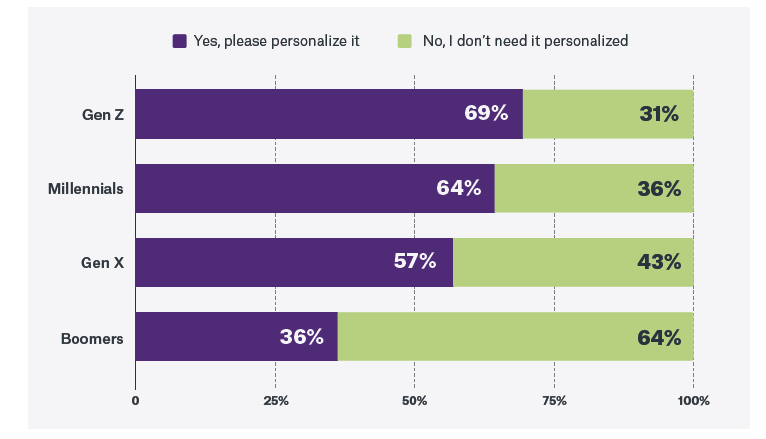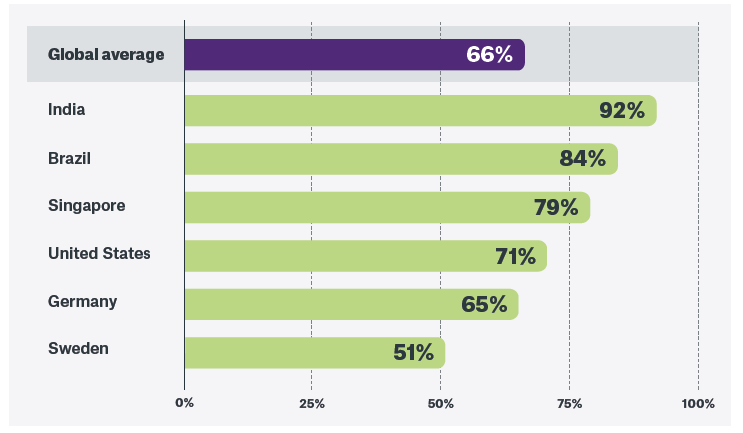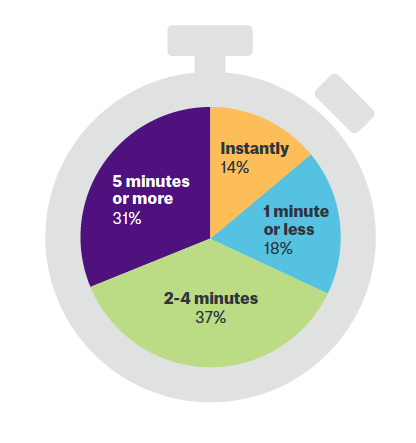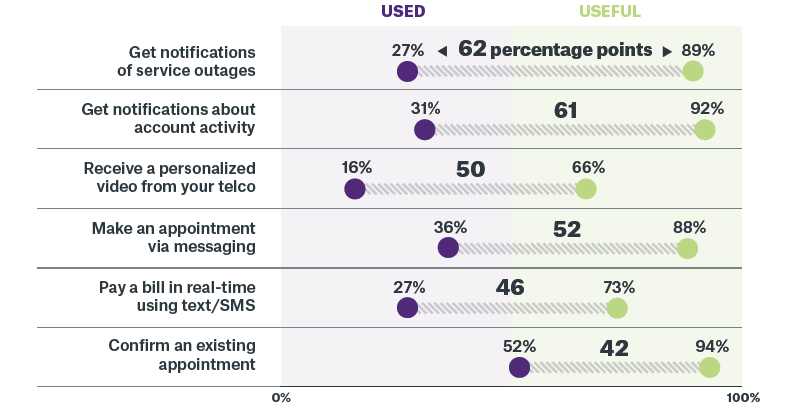Insights, Products
Three big opportunities for mobile CX in the telco industry

Insights, Products

Research commissioned by Sinch shows telco customers want to use mobile messaging in new and more engaging ways — from making a service call inside the messaging stream to receiving personalized videos with unique offers. Now it’s up to telecoms to deliver on this need. Here we’ll sum up the research and the key takeaways for industry leaders.
The Sinch study, which surveyed 2,890 consumers across 14 countries, shows how telco customers use their mobile phones today, what features and functions they’d like, and what they expect from brands that try to engage them.
Over the last 12 months, as consumers shied away from physical places and increasingly turned to digital spaces, the mobile phone became a supertool for consumers to find their way in the world. Brands are increasingly using messaging to engage their customers, gather insights, and improve customer experience. And traditional push messaging programs (the ones that pigeonhole customers based on demographic or geographic profiles) won’t cut it anymore. Companies must focus on truly personalized conversations — asking questions, developing tailored customer profiles, and offering highly personalized experiences based on all those insights.
The research from Sinch shows telco customers value personalization, particularly younger customers. 69% of Gen Z say they want messages from companies to be personalized based on buying history and interests, and 64% of Millennials agree.
Most consumers want personalized messages from companies, but millennials and Gen Z prefer it by a wide margin.

For telecom customers, this means delivering personalized experiences through mobile messaging, such as:
The research shows customers believe personalized videos are useful — even if they haven’t experienced them. On average, 66% say personalized videos are useful, and the positive rate is significantly higher in countries like India, Brazil, and Singapore.
In India, Brazil, and Singapore, enthusiasm for personalized video is extremely high.

Whether delivering a personalized video or a unique offer, the goal is to ensure every interaction and touchpoint makes sense for a single customer based on their individual profile. But it doesn’t stop there. Companies must constantly seek to learn more about, and improve their understanding of each customer. “The evolution we as marketers need to take is to stop talking at our customers and invite them to have a dialogue,” says Matt Ramerman, President of Sinch for Marketing. “By initiating a two-way dialogue, we will sell more products, drive down acquisition costs, and have much more satisfied customers because we are listening and treating them as individuals.”
Telecoms have been using chatbots for years, yet the research shows customers are ready for more — features and functions many industry players aren’t using yet.
First, let’s look at how chatbots are used today. Overall, telco customers are satisfied with chatbot interactions. Of those who use chatbots, more than three in four say they had a positive experience with the speed of response to their call/query, the privacy/anonymity of the interaction, and the speed with which their issue was resolved. And more than half of consumers said they were satisfied by chatbot personalization.

Chatbots play an important role for telco companies because they help to speed up the resolution of customer queries, and according to the Sinch research, people have a high bar when it comes to speed-to-resolution. Most telco customers expect their issue to be resolved in four minutes or less.
Yet basic customer service chatbots only scratch the surface of what’s possible using interactive messaging. Currently, they are used for simple template-based queries (e.g., “What’s my account balance?”). New solutions fueled by AI and natural language processing will offer telcos a much wider set of applications for chat, including:
A customer queries via messaging whether a product is in stock, and the chatbot offers to complete the transaction in the chat. (Example: “Mary, we have the Galaxy S21 Ultra 5G in stock at the Oxford shop, but if you’d like to skip the store, you can buy it now. You’ll receive it by tomorrow at 5 pm.”)
Using messaging, a customer can book an at-home visit for a service call and get on-demand arrival time updates from a technician in the field.
Some customers prefer to interact with a human at a retail store, but waiting in lines breeds frustration. Using messaging, telcos can manage expectations and wait times with real-time in-store traffic insights. Example: “John, the retail shop in Belmont is open now, but the wait time is 20 minutes. We expect the wait time to drop to under 5 minutes at 4 pm.”
When chatbots can address a wider range of customer queries, they, in turn, reduce time-to-serve, lower costs, and increase conversations.
There is a wide range of places where telcos can invest in mobile CX, but it’s important to understand where the customer needs/demands are greatest … in other words, where the investment will pay off quickly.
The survey asked consumers to identify the various ways they use their phones to interact with businesses, as well as which of these scenarios they find useful. Comparing the two, the study isolates which features show the biggest gap between usage rates and “usefulness” — something Sinch calls the opportunity gap.
For example, just 27% say they currently receive notifications of service outages on their mobile phones, but 89% would find this useful — a gap of 62 percentage points. Other areas for telcos to focus on (where the gap is large between what customers want and what they currently use): getting notifications about account activity, receiving personalized videos, making service appointments via messaging, and paying a bill in real-time via messaging.
While consumers see high value in mobile messaging with brands, adoption remains low in comparison.

These are opportunities where telecoms can deepen relationships with customers through conversation and improve customer satisfaction — and best of all, they are all applications that are available today for telecoms ready to invest in conversational messaging.
Want even more information about how telcos are engaging customers through mobile messaging? Download Sinch’s latest industry report: Telco transformed. Plus, find the entire series, Customer experience in a transformed world.